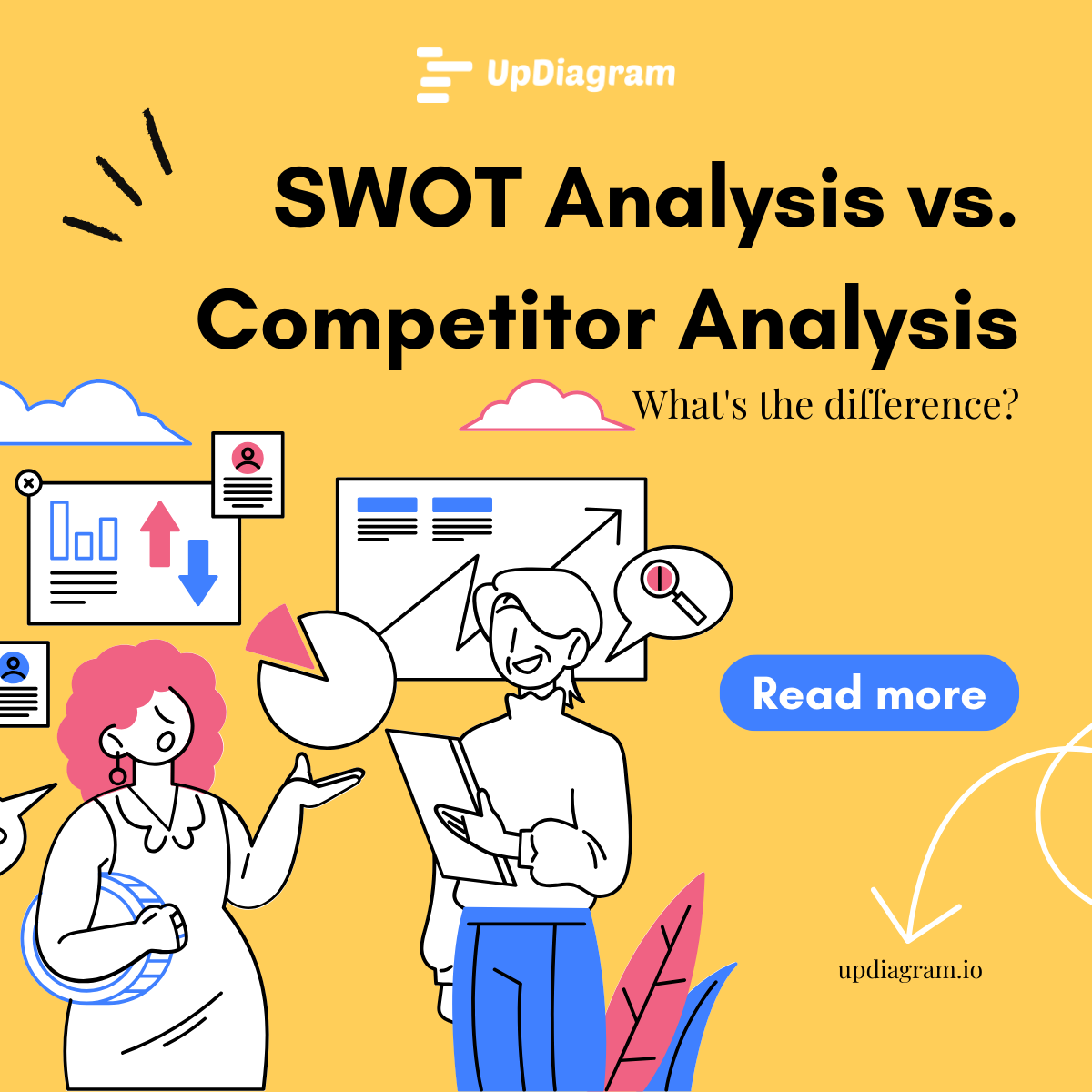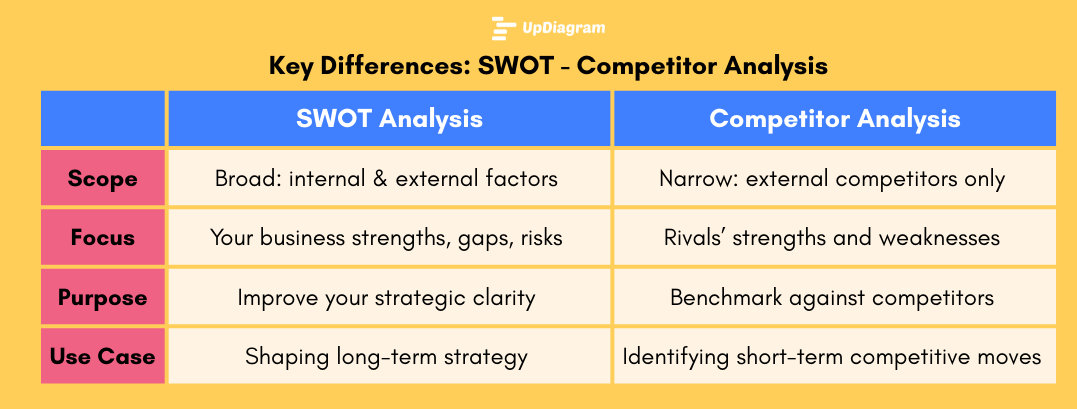
Many businesses struggle with one critical problem: difficulty reaching their target audience. You might have a great product, but if your strategy is unclear, customers will never see the value. That’s where analysis tools come in specifically SWOT analysis and competitor analysis.
At first glance, they may seem similar. Both help businesses understand their environment and make better decisions. But SWOT and competitor analysis focus on different things and knowing the difference can determine whether your strategy succeeds.
SWOT stands for Strengths, Weaknesses, Opportunities, and Threats. It is a broad framework used to evaluate both internal and external factors affecting your business.
Example: A startup may find that its strength is innovative design, weakness is low marketing budget, opportunity is rising demand for eco-friendly products, and threat is a bigger competitor entering the same niche.
SWOT is about understanding your position in the market and identifying what to improve or leverage.
You may like: Common Mistakes in Doing SWOT Analysis
Competitor analysis focuses specifically on studying your rivals. It answers questions like:
Example: A coffee shop may analyze competitors by comparing menu prices, location strategies, loyalty programs, and customer reviews.
Competitor analysis is narrower than SWOT it zooms in on other players in the market rather than your overall business context.
We illustrate a table below to decribe key differences:

How They Work Together? The truth is, businesses need both.
Example: If you’re struggling to reach your target audience, competitor analysis might reveal that rivals are using TikTok ads effectively. A SWOT analysis could then show whether you have the resources and brand identity to adopt the same channel.
Used together, these tools provide a 360° view that helps businesses reach customers more effectively.
Difficulty reaching your target audience is often a sign of unclear strategy.
SWOT analysis vs. competitor analysis isn’t about choosing one over the other it’s about knowing the difference and using both together. SWOT gives you clarity about your own business, while competitor analysis helps you understand the playing field.
By combining both, startups and growing companies can make smarter decisions, connect with their audience, and stay ahead in competitive markets.
Want to put insights into action? Try UpDiagram’s Productivity Management Platform a simple way to document SWOT findings, track competitor data, and turn strategy into results.